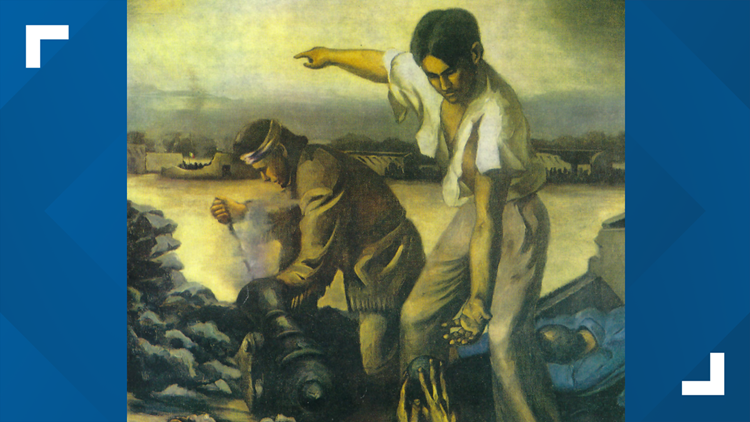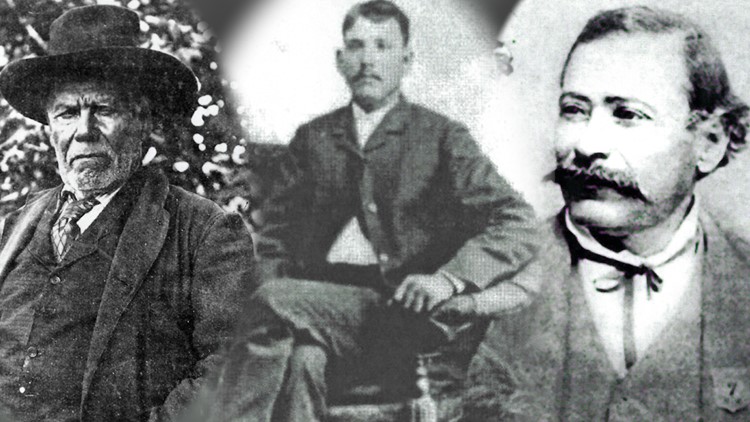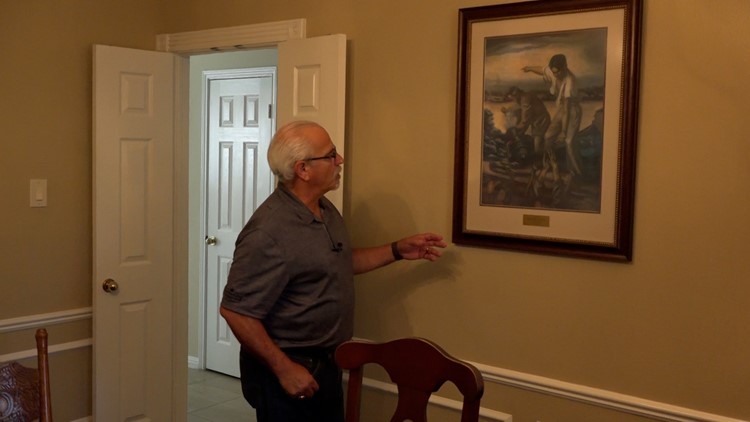SAN ANTONIO — Anyone whose studied Texas history knows the Alamo. The siege beginning in February 1836 is regarded as one of the central moments to Texas’ independence from Mexico.
For one Mexican-American studying Texas History in school back in the 1960s and 70s, he learned something that wasn’t in the history books.
George Benavides, born and raised in Beeville, Texas, lives in Austin currently. He recalls his grandmother asking about his studies after school one day. Benavides says he’s studying history about the Alamo.
“She just blurted out that, ‘Oh, my ancestors fought and died at the Alamo.’ Me being Hispanic, Chicano, Mexican-American, I thought obviously as a fifth grader, oh, for the Mexican side. She said ‘No, for Texas.’” He said.
Benavides couldn’t find anything in books at the time mentioning Mexican Americans fighting for Texas.
“I told her she was wrong. She got very upset with me and told me that the books were wrong,” Benavides recalls.
For years, Benavides researched his family’s genealogy, which was tougher back then.
“Back then, there wasn’t Ancestry or 23andMe, and all these other things that you have now. So it was all going to courthouses, cemeteries and researching, doing footwork type deal,” he said.
In 1989, things clicked when he visited the Alamo with his wife and daughter. A woman was inside giving a presentation.
The speaker asked if people knew who William B. Travis, James Bonham, Davy Crockett and Jim Bowie were. Many responded saying those were Alamo heroes.
“She said, ‘Okay, how many of you know Toribio Losoya, Andres Nava, Antonio Fuentes, Gregorio Esparza?’ Nobody said anything, but I looked over at my wife and told her, ‘Esparza, that’s one of the names I’m researching!' I didn’t say anything else, I just thought that’s kind of weird,” Benavides said.
The speaker said Esparza was one of the most unsung heroes because he was the only Alamo defender to have a Christian burial. His brother was allowed to retrieve his body after the siege ended.
“It hit me pretty hard,” Benavides said.
Several family records and marriage licenses that he gathered say that Gregorio Esparza is Benavides’ fourth great grandfather, who was married to Anna Salazar. The pair had three sons and one daughter.
Gregorio Esparza and his descendants
A portrait of Esparza helping load a cannon at the Alamo hangs in Benavides’ home. The portrait was a gift for Benavides’ parents 50th wedding anniversary.
Esparza lived in San Antonio with his wife Ana Salazar, along with their children Enrique, Manuel and Francisco Esparza.
Benavides says Esparza was offered the chance to leave during the Alamo siege. Santa Anna gave Esparza and other men the opportunity to leave. “His wife said, ‘We’re not leaving. If we die, we’ll die together,'” Benavides recalls.
“I cannot be prouder of being anything else in my life,” Benavides said.
The difficulty in proving his heritage is a reality that faces several families who could be Alamo defender descendants. Ernesto Rodriguez, curator at the Alamo, says the native population’s contributions have been forgotten over time.
“Why? This is a loss. A lot of the records that were here are taken or destroyed, so to compile names is a little harder because you have to go back and try to find affidavits for the families. A lot of the people here don’t have the financial support they need to file those claims,” Rodriguez says it's an ongoing process to link together the missing pieces of history.
“The Hispanic population is constantly working to try to preserve the history of not only this site, but all the other sites we have in town. Because our history matters to the greater scheme of things,” Rodriguez said.
Benavides says while the research was extensive, the reward in learning his heritage was great. He encourages others to take the steps he did.
“Research it, find out about it, ask, get involved and see if you can put the puzzle together. If you don’t do it, who will?” Benavides asks.
The Esparza family has held family reunions for the past several years.
Benavides says a memorial is set up at Milam Park, which was Campo Santo at the time, where his ancestor was buried.
The Alamo Defenders Descendants Association includes over 300 members, who are all direct or lateral descendants of Alamo heroes.
Related links on KENS 5:







